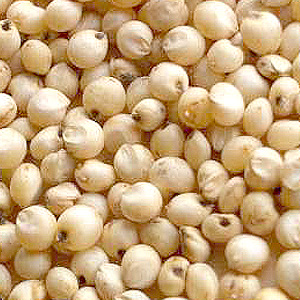
Name : Maize
After wheat and rice, maize claims the global spotlight as the foremost essential crop. Over the past decade, it has maintained its reign as the leading crop both in production and the expansive tracts of land it occupies. Comparable to the significance of rice and wheat in Asian nations, maize holds equal sway in the American continent. Its diverse applications span various domains, serving as animal feed, a key component in alcoholic beverages, food sweeteners, starch, oil, and proteins. A recent revelation unveils maize’s potential as a fuel source. Noteworthy production centers encompass Andhra Pradesh, Karnataka, Bihar, Punjab, and Uttar Pradesh.

Name : Millet Bajra
Millet is a broad classification encompassing grasses that yield small, edible grains. These grains thrive predominantly in arid regions of the Far East and Africa. Millets offer lower protein content but boast higher fat levels compared to wheat, establishing them as nutritional powerhouses. These grains have a comparable richness in nutritional value. Beyond their culinary uses, millets can also be harnessed for the production of alcoholic beverages through fermentation. They can be boiled and consumed whole, while in southeastern Europe, they’re ground into meal for crafting hearty, dense bread or nourishing porridge. In Western contexts, millets serve primarily as animal feed, notably for poultry and other avian species.

Name : Sorghum Seeds
The sorghum grain holds a significant role as a cereal staple, particularly among the less privileged in many nations. Resembling maize yet containing higher fat and protein content, sorghum proves advantageous for livestock, thus driving its popularity as a preferred feed crop.
Ranked fifth globally among cereal crops—following wheat, rice, maize, and barley—sorghum thrives in arid and semi-arid regions, owing to its exceptional drought resistance. Its nutritional composition akin to corn enhances its significance in livestock nutrition. Beyond this, sorghum’s utility extends to ethanol production, yielding grain alcohol, starch, adhesives, and paper, while also serving as both food and feed.

Name : Popcorn
Popcorn, a variant of corn kernel, undergoes a remarkable transformation, swiftly expanding and puffing up when subjected to heat.
Encased within a robust hull, a popcorn kernel harbors its firm, starchy endosperm with a moisture content of around 14-15%. As heat is applied, this moisture converts into steam, instigating a gradual build-up of pressure that ultimately surges beyond the hull’s capacity to confine it. This culminates in the kernel’s rupture and explosion, unleashing its contents to expand, cool, and eventually settle into a popcorn puff, often reaching 20 to 50 times the original kernel’s size.
Certain varieties of corn, specifically classified as Zea mays, are meticulously cultivated for the singular purpose of yielding popping corns. Among these, Zea mays variety everta, a distinct type of flint corn, reigns supreme in terms of prevalence and usage.

Name : Rice
Rice, known as “Chawal” in Hindi, is a staple food that has been a dietary cornerstone for countless cultures across the globe. It is derived from the seeds of the Oryza sativa or Oryza glaberrima plants, depending on the variety. With origins dating back thousands of years, rice has a rich history intertwined with the development of agriculture and human civilization.
Rice is cultivated in diverse climates, ranging from flooded paddy fields to upland terraces, and its cultivation methods vary from region to region. The grain itself is encased in a protective husk that is removed during the milling process to reveal the edible endosperm, which constitutes the majority of the rice kernel.
As a dietary staple, rice boasts an array of benefits that contribute to human health and nutrition. It serves as a significant source of complex carbohydrates, which are essential for providing energy to the body. The slow-release energy from rice makes it a valuable source of sustained fuel, making it an ideal choice for athletes and individuals with active lifestyles.
Rice is virtually free of fats and cholesterol, making it heart-healthy and suitable for those seeking a balanced diet. Additionally, rice is naturally gluten-free, making it a safe and essential food for individuals with gluten sensitivities or celiac disease.
The versatility of rice is another key attribute that has cemented its status as a global culinary treasure. It serves as the foundation for a wide range of dishes, from savory pilafs and stir-fries to creamy rice puddings and sweets. In many cultures, rice is a canvas for culinary creativity, absorbing flavors and spices to create diverse and delightful dishes.
Moreover, rice is often enriched with essential nutrients, such as iron and B-vitamins, during the milling process to enhance its nutritional value. Enriched rice can contribute to meeting dietary requirements and addressing nutrient deficiencies, particularly in regions where rice consumption is high.
In addition to its role as a dietary staple, rice holds cultural and social significance in many societies. It plays a central role in religious ceremonies, rituals, and traditional celebrations in various parts of the world.
Overall, rice is a vital food source that nourishes billions of people, supports energy needs, and offers culinary possibilities that cater to a multitude of tastes and preferences. Its enduring presence in global diets underscores its importance as a fundamental grain that sustains both body and culture.

